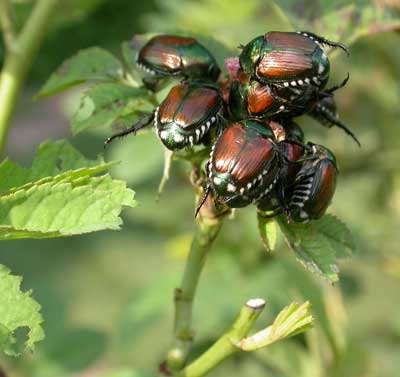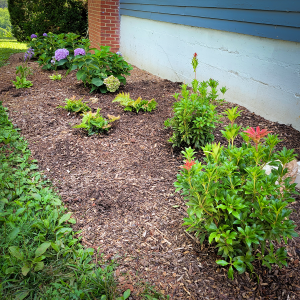
Japanese Beetle—just a pest? or causing serious damage?
The Japanese beetle is found throughout Virginia and has been well established in Virginia since the early 1970’s. They feed on a wide variety of trees, shrubs, and herbaceous plants. They can severely damage the foliage for fruit trees and grapes and can at times be pest of vegetables and field crops. The immature stage, also called a grub or white grub can reach pest status on many varieties of grass grown for turf in Virginia.
The adult of the Japanese beetle is bright metallic green and is about 3/8 inch long. It is smaller then the Green June beetle which is over ¾ inch long. The Japanese beetle wing covers are coppery colored and there are a series of tufts of white hairs on the abdomen. The larvae of the Japanese beetle are similar to other species of white grubs and have an off-white body with a brown head. They curl into a C-shape when not active. Japanese beetles larvae have a distinctive v-shaped row of spines on the end of the abdomen.
Damage from Adult Beetle: Japanese beetles chew small holes in leaves between the leaf veins. This damage gives the leaves a lacy appearance and is called skeletonizing. They will also feed on fruit and buds. Heavily damaged trees and plants will take on a brownish cast as leaves shrivel and die


